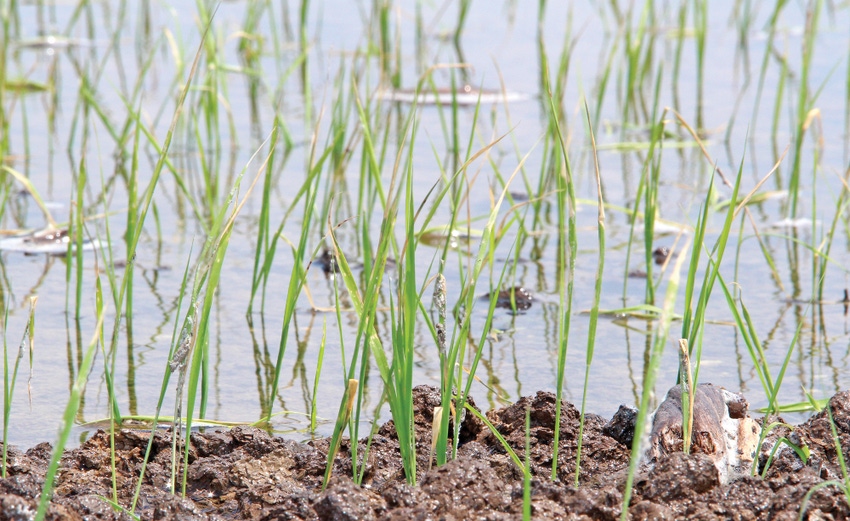May 9, 2014

For many years Permit has provided rice growers with an excellent option for sedge control. In 2002, when Clearfield rice and Newpath herbicide was introduced it, too, was found to control most sedges. Basically yellow nutsedge (Cyperus esculentus) and annual or rice flatsedge (Cyperus iria) have been the two major sedge pests that rice farmers in the upper Delta have had to deal with.
Yellow nutsedge reproduces mostly by vegetative means by the production of tubers on the root system. Predictably this make resistance slow to develop.
Annual sedge, on the other hand, produces by seed and, therefore, has the potential for more genetic diversity. A few years ago the first populations of annual sedge or rice flatsedge that were resistant to the ALS chemistry (Group 2) herbicides (including Newpath, Regiment and Permit) started turning up. Now more than a dozen of these populations are known to exist with more being reported all the time.
At least one population of yellow nutsedge has been found to be ALS-resistant.
One new population of sedges is turning up in Arkansas. Umbrella sedge (Cyperus difformis) is smaller sedge in stature that reproduces by seed. This sedge prefers the undisturbed soils of zero grade, water-seeded or no-till rice fields. It likely came to Arkansas in contaminated seed from California rice production where it has been a big problem for years. It came to us here in the Delta with a pre-existing condition of being ALS resistant.
ALS-resistant sedges have become a big enough problem that we have put together Fact Sheet FSA 2173 that describes these pests and gives some control options.
Control options are limited for nutsedge when the ALS chemistry will not work anymore. The best program approach that we have come up with is to start out with a very early post application (1- to 2-leaf rice) of RiceBeaux (propanil + Bolero) followed by a late post or post-flood application of Basagran plus a quart of SuperWham, EC propanil or a good adjuvant. Single applications of Basagran plus Propanil and Crop Oil, RiceBeaux, or Grandstand plus Propanil were effective on annual sedge, but not as good on yellow and umbrella as the program described above. These recommendations can also be found in the MP44 at our same web site.
There is some new chemistry on the way that may help alleviate some of the ALS-resistant sedge problems that we are facing, but for now farmers should consider crop rotation, a diversified approach where there is no resistance and the use of the programs mentioned above where these weeds have already become a problem.
You May Also Like




